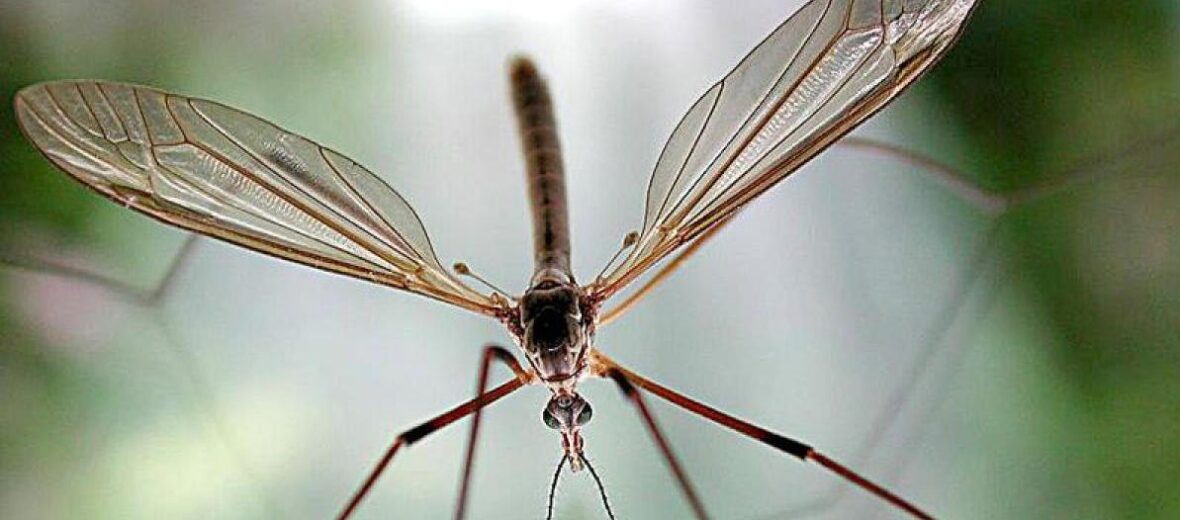
It’s not a ginormous mosquito, it’s a crane fly. These large flying insects have gained popularity by being called mosquito hawks, due to the misconception that they hunt mosquitoes. They are also called daddy long legs, in Europe. These insects are more closely related to flies than mosquitoes though. There are over 14,000 known species of crane flies in the world and this makes them the largest family of all the known fly species. They may be annoying and some even a pest to crops, but they are totally harmless.
First the Stats…
Scientific name: Tipulidae
Length: Up to 4 inches
Lifespan: Up to 15+ days (several days as adults and up to a year in the larval stage)
Now on to the Facts!
1.) Adults do not bite. These critters actually typically don’t even eat. They live, in the adult phase, just long enough to find a mate. They then reproduce and die in mere days.
2.) The larvae feed on algae, bacteria, and diatoms from the rocks, wet and rotting wood, sediments, and other submerged or damp objects.
3.) Some crane fly larvae are considered predators as they come equipped with sharp mandibles that are used for preying on aquatic insects and invertebrates.
4.) A few adult crane flies are presumed to feed on nectar, but they don’t bite animals or humans.
5.) The abdomen can be used to determine the gender of the crane fly. Females have pointy abdomens and males are blunt.
But wait, there’s more on the crane fly!
6.) Crane fly larvae are called ‘benthic-dwelling’ creatures. This means they live along the bottom floor or along the sediment of water bodies.
7.) Like other insects they go through 4 stages of development: egg, larva, pupae, and adult.
Did you know…?
If you think the crane flies in America are big, in tropical regions, they can get up to 4 inches long. That’s just the body. Then you add the 8+ inch long legs!
8.) Females lay their eggs in water, moist soil, and even wet and rotting wood.
9.) It typically takes around 2 weeks for the eggs to hatch into larvae where they can live for up to 1 year. Males hatch first.
10.) The larvae of some species develop a tough outer skin which has gained them the name “leatherjackets”.
Now a Short Crane Fly Video!
Also, check out the Critter Science YouTube channel. Videos added frequently!
Want to suggest a critter for me to write about? Let me know here.



